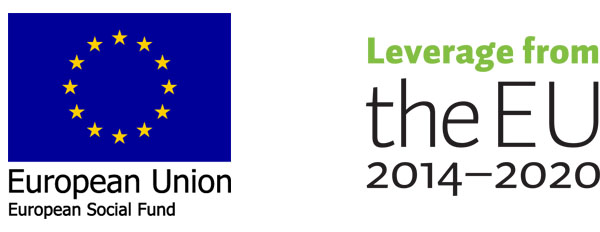The CityDrivers project: Creativity meets business
Laurea-coordinated CityDrivers project aims to improve the ability of creative professionals to provide service design- and co-creation-based services.

News 7.9.2018
How could professionals in creative industries (artists, graphic designers, advertising professionals, etc.) make a valuable contribution to the development of business in companies? What new employment opportunities could creative professionals achieve through innovative collaboration with companies?
The CityDrivers project, coordinated by Laurea and funded by the European Social Fund, aims to improve the ability of creative industry professionals to provide service design- and co-creation-based services. In addition to Laurea, the parties carrying out the project include Tampere University of Applied Sciences, South-Eastern Finland University of Applied Sciences and the Finnish Association of Designers Ornamo.
How could professionals in creative industries make a valuable contribution to the development of business in companies?
In autumn 2017, the project launched a series of free-of-charge courses and workshops that provide creative industry experts with new competence in service design and co-creation methods, among other things. The first course was organised in the Helsinki Metropolitan Area, lasting until early 2018. The next courses are arranged in Tampere in the spring, in Kymenlaakso in autumn 2018 and again in the Helsinki Metropolitan Area later in the year.
The CityDrivers project also provides the training participants with tools for identifying new employment opportunities and developing their personal competence. Another area of focus is the promotion of networking and cooperation among creative industry professionals themselves and with professionals of other fields.
Diverse group of participants
The CityDrivers training has raised a lot of interest and attracted a total of 175 applicants. From among these, 30 were chosen for the six-month course that includes 25 days of face-to-face instruction.
The course participants are a diverse group consisting of, for instance, graphic designers and other designers, communications and marketing experts, art pedagogues, cultural producers and artists.
In addition, the project participants include companies and public sector operators interested in developing their business operations together with creative professionals representing different fields. The course arranged in the Helsinki Metropolitan Area involved six organisations of various types and sizes, ranging from the multinational industrial corporation Konecranes to the two-person startup HILDA.
Together with these partners, the participants of the CityDrivers training worked in small teams on development assignments from the companies. The participants’ broad range of skills and expertise as well as the service design and co-creation methods learned during the CityDrivers training courses were useful in this work.
User experience as a starting point
The assignment from Konecranes focused on the new smart material management system, Agilon. The objective of the participants in the training was to acquire an understanding of customers and gain user experience for the development of a system for luggage handling at airports.
- We wanted to find new uses for the Agilon product through the assignment, particularly something completely new compared with our conventional customer base in industry, explains Vesa Hämetvaara, the project supervisor at Konecranes and Head of Product Management at Konecranes Agilon Business.
"A new angle is one of the most important contributions we can receive from professionals of creative industries."
The team of CityDrivers trainees started testing the user experience with an open mind, choosing active seniors as the target group. They used the experience prototype method, in which they, together with the test subjects representing the target group, walked through the luggage pick-up process in a simulation scenario.
- In my opinion, this was an excellent approach, and senior citizens as the target group were a fantastic idea, Mr Hämetvaara says.
- This assignment once again proved that a new angle is one of the most important contributions we can receive from professionals of creative industries. As engineers, we had started analysing transaction times and volumes. These, of course, are also important questions, but everything must start from the customer experience.
According to Mr Hämetvaara, expanding the understanding of the customer is important for Konecranes, particularly with respect to the Agilon product. As a leading manufacturer of cranes, Konecranes is a long-established expert of industrial processes. They know the customers and their needs in this branch. However, with the Agilon product, they want to access completely new segments.
“Creative talents and big companies do not speak the same language”
- The market for creative agencies has contracted over the past decade. In fact, we are already in a hurry to find completely new ways of working as well as alternative business models. One possible solution for creative players is to engage in more open cooperation in different networks, says Menno Liauw, the founder of the Vandejong Creative Agency based in Amsterdam, the Netherlands.
Mr Liauw visited a seminar of the CityDrivers project at Laurea in February with Sabine E. Wildevuur, also from the Netherlands. Ms Wildevuur is the head of Waag Society’s Creative Care Lab that combines creative competence and well-being technology.
- In my opinion, it is very important that we can introduce tools and methods used in creative industries in a branch such as health care, Ms Wildevuur says.
- At the moment, health care is a branch that seems to be undergoing a transformation all over the world. We may not be able to influence the big picture by means such as design, but we can implement small improvements to provide patients and health care professionals with better services and products.
"Networks play a key role in connecting the creative branch with companies."
According to Menno Liauw, networks play a key role in connecting the creative branch with companies. He says that, at the moment, the gap between large companies and creative agencies is still wide with respect to seeing and thinking.
- As creative players, it is our responsibility to learn to speak the same language with the companies. We must learn to measure the results of our work and sell our expertise. One way to achieve this is to be open and join as many different networks as possible, Mr Liauw says.

More information:
- Teemu Santonen
- Principal Lecturer
- Teemu.Santonen@laurea.fi
- Tel (09) 8868 7487